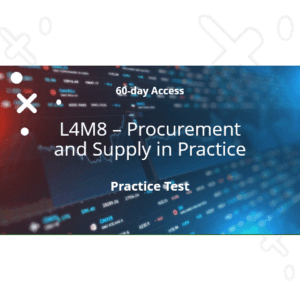Introduction to Mendelow’s Matrix

Identifying all relevant stakeholders involved in procurement and supply process is very important. Procurement professionals need to define and profile them so that they know more about how each stakeholder affects to the business or be affected by the business. The fact that different stakeholders have different priorities often leads to conflict. For instance, the organisation wants to maximise their profit by spontaneously increasing the revenue and reducing the total costs. However, the community adjacent to the organisation concerns about the quality of their living environment so that the community will have influence on the organisation’s amount of waste. This lead the organisation to spend more on waste management.
External stakeholders or even internal stakeholders are sometimes ignored, this often leads to conflict. The business therefore need to find a way to balance the priorities of all relevant stakeholders. Mendelow’s stakeholder matrix is a tool that is used to categorise stakeholders. This will consider two factors:
- The level of interest that a stakeholder has in a project
- The power that a stakeholder may influence in a project
Understanding the power and the interest
- Power
Power is the ability to influence, the ability of individuals or groups to persuade, induce or coerce others into following certain course of action. In case of your stakeholders this means their ability to influence the organization or, looking at it from a purchasing and supplies point of view, their ability to influence procurement activities.
- Interest
Interest is the likelihood that stakeholders will use their power, basically the strength of their motivation to do so, so based on the strength of their interest in a given issue or decision.
Identifying the level of interest and power of stakeholders is relatively sophisticated. To deal with it, procurement professionals should prepare the profile of stakeholders which help them get the knowledge of these stakeholders. Purchasers may find the information of stakeholders in variety of ways such as survey, face-to-face conversation, desk or Internet… A clear understanding of all relevant stakeholders help purchasers give the solutions that fit all the priorities.
Mendelow’s matrix consists of 4 boxes representing stakeholders with:
- High Interest and High Power: these will be considered as key players so that the business will need to actively engage this group.
- High Interest and Low Power: this group have an interest in a project, however they are unlikely to have the power to influence on the project. This group should be kept informed.
- Low Interest and High Power: this group of stakeholders have the potential to move into the ‘High Interest and High Power’ group so it is essential that they are kept satisfied. By keeping them satisfied they are less likely to gain interest and exercise their power to influence
- Low Interest and Low Power: these stakeholders are the least important ones but they are still important to the organisations. Without engaging with them, the organisation’s operations may be disrupted. This group may be small suppliers or customers which requires little effort. However, the organisation should update them about the changes to keep them engaged and they also feel valued.
References:
- CIPS L2M3 study guide – Stakeholder Relationships
- Mendelow’s matrix – Zerite Network
- Mendelow’s matrix – Bizzle Dizzle
